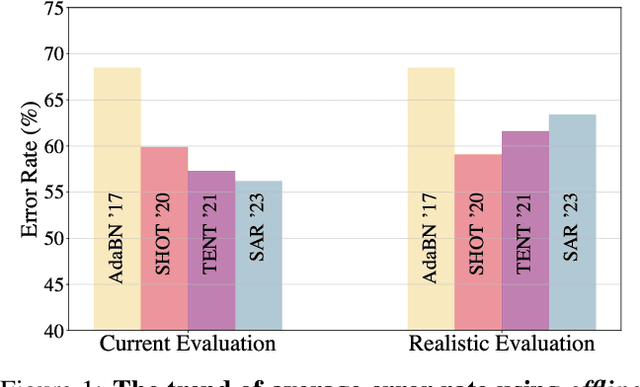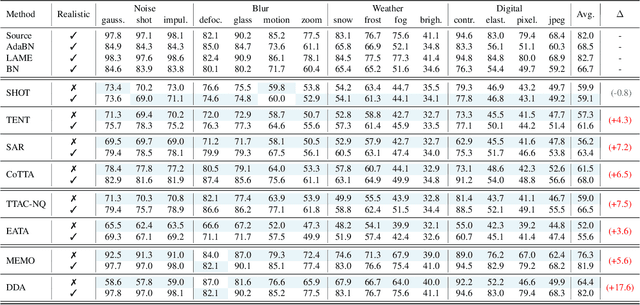Matthias Müller
Magnecko: Design and Control of a Quadrupedal Magnetic Climbing Robot
Apr 18, 2025Abstract:Climbing robots hold significant promise for applications such as industrial inspection and maintenance, particularly in hazardous or hard-to-reach environments. This paper describes the quadrupedal climbing robot Magnecko, developed with the major goal of providing a research platform for legged climbing locomotion. With its 12 actuated degrees of freedom arranged in an insect-style joint configuration, Magnecko's high manipulability and high range of motion allow it to handle challenging environments like overcoming concave 90 degree corners. A model predictive controller enables Magnecko to crawl on the ground on horizontal overhangs and on vertical walls. Thanks to the custom actuators and the electro-permanent magnets that are used for adhesion on ferrous surfaces, the system is powerful enough to carry additional payloads of at least 65 percent of its own weight in all orientations. The Magnecko platform serves as a foundation for climbing locomotion in complex three-dimensional environments.
AI-based Density Recognition
Jul 24, 2024Abstract:Learning-based analysis of images is commonly used in the fields of mobility and robotics for safe environmental motion and interaction. This requires not only object recognition but also the assignment of certain properties to them. With the help of this information, causally related actions can be adapted to different circumstances. Such logical interactions can be optimized by recognizing object-assigned properties. Density as a physical property offers the possibility to recognize how heavy an object is, which material it is made of, which forces are at work, and consequently which influence it has on its environment. Our approach introduces an AI-based concept for assigning physical properties to objects through the use of associated images. Based on synthesized data, we derive specific patterns from 2D images using a neural network to extract further information such as volume, material, or density. Accordingly, we discuss the possibilities of property-based feature extraction to improve causally related logics.
OpenBot-Fleet: A System for Collective Learning with Real Robots
May 13, 2024Abstract:We introduce OpenBot-Fleet, a comprehensive open-source cloud robotics system for navigation. OpenBot-Fleet uses smartphones for sensing, local compute and communication, Google Firebase for secure cloud storage and off-board compute, and a robust yet low-cost wheeled robot toact in real-world environments. The robots collect task data and upload it to the cloud where navigation policies can be learned either offline or online and can then be sent back to the robot fleet. In our experiments we distribute 72 robots to a crowd of workers who operate them in homes, and show that OpenBot-Fleet can learn robust navigation policies that generalize to unseen homes with >80% success rate. OpenBot-Fleet represents a significant step forward in cloud robotics, making it possible to deploy large continually learning robot fleets in a cost-effective and scalable manner. All materials can be found at https://www.openbot.org. A video is available at https://youtu.be/wiv2oaDgDi8
Mesh2NeRF: Direct Mesh Supervision for Neural Radiance Field Representation and Generation
Mar 28, 2024Abstract:We present Mesh2NeRF, an approach to derive ground-truth radiance fields from textured meshes for 3D generation tasks. Many 3D generative approaches represent 3D scenes as radiance fields for training. Their ground-truth radiance fields are usually fitted from multi-view renderings from a large-scale synthetic 3D dataset, which often results in artifacts due to occlusions or under-fitting issues. In Mesh2NeRF, we propose an analytic solution to directly obtain ground-truth radiance fields from 3D meshes, characterizing the density field with an occupancy function featuring a defined surface thickness, and determining view-dependent color through a reflection function considering both the mesh and environment lighting. Mesh2NeRF extracts accurate radiance fields which provides direct supervision for training generative NeRFs and single scene representation. We validate the effectiveness of Mesh2NeRF across various tasks, achieving a noteworthy 3.12dB improvement in PSNR for view synthesis in single scene representation on the ABO dataset, a 0.69 PSNR enhancement in the single-view conditional generation of ShapeNet Cars, and notably improved mesh extraction from NeRF in the unconditional generation of Objaverse Mugs.
GIM: Learning Generalizable Image Matcher From Internet Videos
Feb 16, 2024



Abstract:Image matching is a fundamental computer vision problem. While learning-based methods achieve state-of-the-art performance on existing benchmarks, they generalize poorly to in-the-wild images. Such methods typically need to train separate models for different scene types and are impractical when the scene type is unknown in advance. One of the underlying problems is the limited scalability of existing data construction pipelines, which limits the diversity of standard image matching datasets. To address this problem, we propose GIM, a self-training framework for learning a single generalizable model based on any image matching architecture using internet videos, an abundant and diverse data source. Given an architecture, GIM first trains it on standard domain-specific datasets and then combines it with complementary matching methods to create dense labels on nearby frames of novel videos. These labels are filtered by robust fitting, and then enhanced by propagating them to distant frames. The final model is trained on propagated data with strong augmentations. We also propose ZEB, the first zero-shot evaluation benchmark for image matching. By mixing data from diverse domains, ZEB can thoroughly assess the cross-domain generalization performance of different methods. Applying GIM consistently improves the zero-shot performance of 3 state-of-the-art image matching architectures; with 50 hours of YouTube videos, the relative zero-shot performance improves by 8.4%-18.1%. GIM also enables generalization to extreme cross-domain data such as Bird Eye View (BEV) images of projected 3D point clouds (Fig. 1(c)). More importantly, our single zero-shot model consistently outperforms domain-specific baselines when evaluated on downstream tasks inherent to their respective domains. The video presentation is available at https://www.youtube.com/watch?v=FU_MJLD8LeY.
EVP: Enhanced Visual Perception using Inverse Multi-Attentive Feature Refinement and Regularized Image-Text Alignment
Dec 13, 2023



Abstract:This work presents the network architecture EVP (Enhanced Visual Perception). EVP builds on the previous work VPD which paved the way to use the Stable Diffusion network for computer vision tasks. We propose two major enhancements. First, we develop the Inverse Multi-Attentive Feature Refinement (IMAFR) module which enhances feature learning capabilities by aggregating spatial information from higher pyramid levels. Second, we propose a novel image-text alignment module for improved feature extraction of the Stable Diffusion backbone. The resulting architecture is suitable for a wide variety of tasks and we demonstrate its performance in the context of single-image depth estimation with a specialized decoder using classification-based bins and referring segmentation with an off-the-shelf decoder. Comprehensive experiments conducted on established datasets show that EVP achieves state-of-the-art results in single-image depth estimation for indoor (NYU Depth v2, 11.8% RMSE improvement over VPD) and outdoor (KITTI) environments, as well as referring segmentation (RefCOCO, 2.53 IoU improvement over ReLA). The code and pre-trained models are publicly available at https://github.com/Lavreniuk/EVP.
Label Delay in Continual Learning
Dec 01, 2023Abstract:Online continual learning, the process of training models on streaming data, has gained increasing attention in recent years. However, a critical aspect often overlooked is the label delay, where new data may not be labeled due to slow and costly annotation processes. We introduce a new continual learning framework with explicit modeling of the label delay between data and label streams over time steps. In each step, the framework reveals both unlabeled data from the current time step $t$ and labels delayed with $d$ steps, from the time step $t-d$. In our extensive experiments amounting to 1060 GPU days, we show that merely augmenting the computational resources is insufficient to tackle this challenge. Our findings underline a notable performance decline when solely relying on labeled data when the label delay becomes significant. More surprisingly, when using state-of-the-art SSL and TTA techniques to utilize the newer, unlabeled data, they fail to surpass the performance of a na\"ive method that simply trains on the delayed supervised stream. To this end, we introduce a simple, efficient baseline that rehearses from the labeled memory samples that are most similar to the new unlabeled samples. This method bridges the accuracy gap caused by label delay without significantly increasing computational complexity. We show experimentally that our method is the least affected by the label delay factor and in some cases successfully recovers the accuracy of the non-delayed counterpart. We conduct various ablations and sensitivity experiments, demonstrating the effectiveness of our approach.
E2PNet: Event to Point Cloud Registration with Spatio-Temporal Representation Learning
Nov 30, 2023Abstract:Event cameras have emerged as a promising vision sensor in recent years due to their unparalleled temporal resolution and dynamic range. While registration of 2D RGB images to 3D point clouds is a long-standing problem in computer vision, no prior work studies 2D-3D registration for event cameras. To this end, we propose E2PNet, the first learning-based method for event-to-point cloud registration. The core of E2PNet is a novel feature representation network called Event-Points-to-Tensor (EP2T), which encodes event data into a 2D grid-shaped feature tensor. This grid-shaped feature enables matured RGB-based frameworks to be easily used for event-to-point cloud registration, without changing hyper-parameters and the training procedure. EP2T treats the event input as spatio-temporal point clouds. Unlike standard 3D learning architectures that treat all dimensions of point clouds equally, the novel sampling and information aggregation modules in EP2T are designed to handle the inhomogeneity of the spatial and temporal dimensions. Experiments on the MVSEC and VECtor datasets demonstrate the superiority of E2PNet over hand-crafted and other learning-based methods. Compared to RGB-based registration, E2PNet is more robust to extreme illumination or fast motion due to the use of event data. Beyond 2D-3D registration, we also show the potential of EP2T for other vision tasks such as flow estimation, event-to-image reconstruction and object recognition. The source code can be found at: https://github.com/Xmu-qcj/E2PNet.
MiDaS v3.1 -- A Model Zoo for Robust Monocular Relative Depth Estimation
Jul 26, 2023Abstract:We release MiDaS v3.1 for monocular depth estimation, offering a variety of new models based on different encoder backbones. This release is motivated by the success of transformers in computer vision, with a large variety of pretrained vision transformers now available. We explore how using the most promising vision transformers as image encoders impacts depth estimation quality and runtime of the MiDaS architecture. Our investigation also includes recent convolutional approaches that achieve comparable quality to vision transformers in image classification tasks. While the previous release MiDaS v3.0 solely leverages the vanilla vision transformer ViT, MiDaS v3.1 offers additional models based on BEiT, Swin, SwinV2, Next-ViT and LeViT. These models offer different performance-runtime tradeoffs. The best model improves the depth estimation quality by 28% while efficient models enable downstream tasks requiring high frame rates. We also describe the general process for integrating new backbones. A video summarizing the work can be found at https://youtu.be/UjaeNNFf9sE and the code is available at https://github.com/isl-org/MiDaS.
Revisiting Test Time Adaptation under Online Evaluation
Apr 10, 2023



Abstract:This paper proposes a novel online evaluation protocol for Test Time Adaptation (TTA) methods, which penalizes slower methods by providing them with fewer samples for adaptation. TTA methods leverage unlabeled data at test time to adapt to distribution shifts. Though many effective methods have been proposed, their impressive performance usually comes at the cost of significantly increased computation budgets. Current evaluation protocols overlook the effect of this extra computation cost, affecting their real-world applicability. To address this issue, we propose a more realistic evaluation protocol for TTA methods, where data is received in an online fashion from a constant-speed data stream, thereby accounting for the method's adaptation speed. We apply our proposed protocol to benchmark several TTA methods on multiple datasets and scenarios. Extensive experiments shows that, when accounting for inference speed, simple and fast approaches can outperform more sophisticated but slower methods. For example, SHOT from 2020 outperforms the state-of-the-art method SAR from 2023 under our online setting. Our online evaluation protocol emphasizes the need for developing TTA methods that are efficient and applicable in realistic settings.
 Add to Chrome
Add to Chrome Add to Firefox
Add to Firefox Add to Edge
Add to Edge